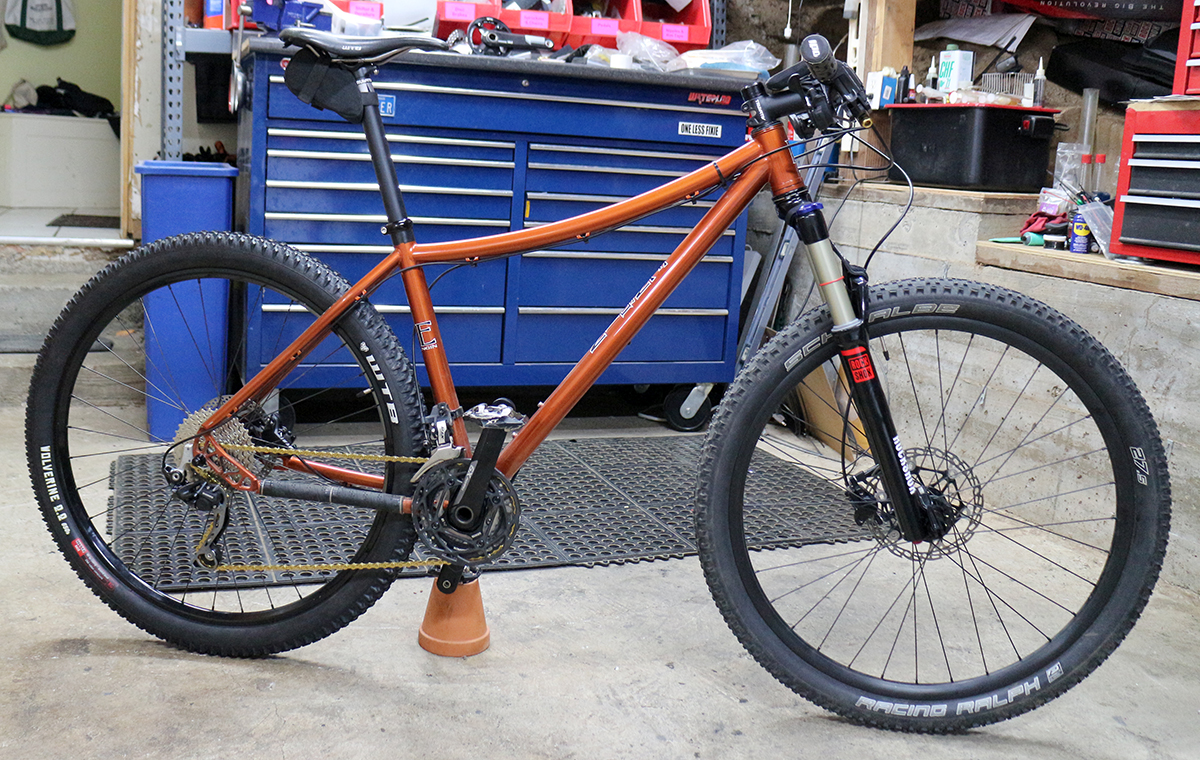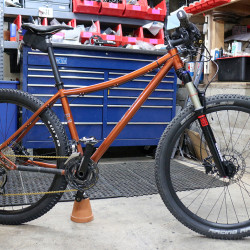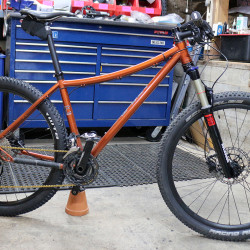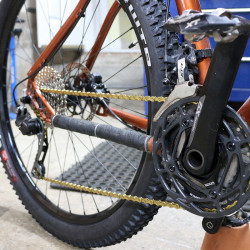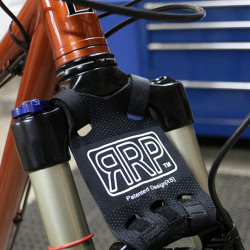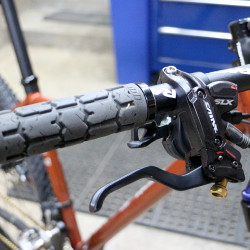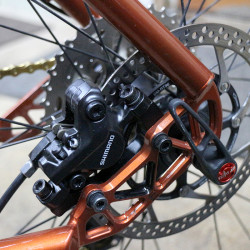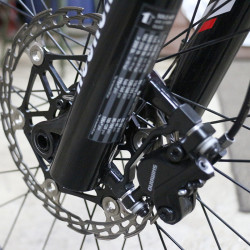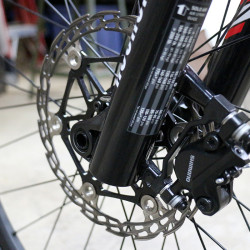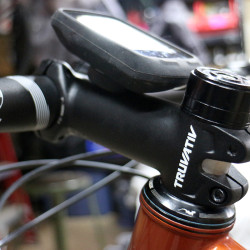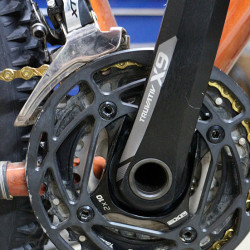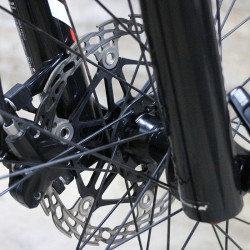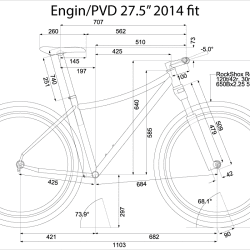Over the years and more subtly throughout the year, how your bike fits you and how you fit your bike will change. This change isn’t just the simple bio-mechanical fit, but also how you relate to and use the bike. It is a commonly held myth in the cycling world that the ‘fit’ of a bike is somehow fixed or won’t change over time and in different places or between different bikes. I firmly disagree with that. The positions of the handgrips and saddle relative to the pedals is always changing. I change my fits several times a year and I’m always questioning if I’ve got it ‘right’. Several factors will contribute to this:
- Increased or decreased drive or competitiveness
- Aggression or passivity level change
- New trends in equipment
- Injury or recovery
- Riding different terrain.
- Differenty types of surfaces
- Riding with different people
- Getting thin or getting fat.
- Getting old. Getting young.
- Etc…
At the end of last summer I started working on a bike that would change the way I look at fitting bikes on a major level. A complete rethinking for me. It was a mixed terrain/cross bike but essentially fit as a flat bar road bike. Flat bar road bikes are very odd creatures. They are road bikes especially focused on urban riding. The same focus on power and aerodynamics apply to them like on all road bikes, but these bikes are expected to handle with a high levels of control in very dangerous situations. They must be capable off launching up and down curbs at high speeds. They have to go up brutal (SF) hills and long flats (getting home) and, when on social rides, often in street clothes. Arriving at an optimal fit for this bike forced me to measure and test and work out a lot of assumptions I had about fit, but also how I was relating to my bike physically.
Much of what I was forced to look closely at is that a good performance fit is setting up the relationship of the pedals and the handgrips and then positioning the saddle. This is completely counter to how almost every fit is done that I know. Most fits will involve getting a saddle position over the pedals (KOPS or otherwise) and then figuring out the handgrip location. The reason for fitting the way I am now using it is most obvious in off road riding as the most critical time spent on the bike (up or down the hill) doesn’t involve any interplay between the rider and the saddle. We are out of the saddle to climb hard and out of the saddle to make speed and handle the descents. For the road, this is often true as well. Of course, we are limited by our ability to support our body weight with our arms over long periods of time. Our back and/or core may not be strong or fit enough to last the length of a ride. We need to last the ride (or day) out on the bike. We may even be limited by the terrain such as large jumps or drops that can move things back a bit. These exceptional factors force us to pick otherwise higher and farther back handgrips than would maximize our short term performance, but the limits need to be found and then, just, backed away from. With modern off road bicycles having such long front centers (even the 650 mm front center of my cross bike…actually insanely long for a cross bike), we can shift our body far forward compared to what we could do on old fashioned bikes and still have enough weight behind the front wheel for quality aggressive descending. Of course, provided we can get the saddle out of the way (dropper).
In the print you see below, notice the X and Y coordinates of the handgrips from the pedals. 510 mm (X) and 640 mm (Y). These are the numbers that I’m looking for in addition to the 682 mm ground front center of the bike and 708 mm wheel diameter. The X,Y will let me compare how I am going to be pedaling and making power and controlling the bike from one setup to another. I can also compare the pedal position with the front wheel space to understand how far back I am. Just add half the wheel diameter to the ground front center to compare the relative clumsiness of the bike in tight conditions but also weather I have enough wheel ahead of me to ride down very steep terrain. For example, a bike that gets much past 1040 mm ahead of my feet creates a real problem on the tight singletrack turns where I ride regardless of how nice the bike rides down in a straight line.
Soon after that bike project was complete and finally tuned (and raced), I started applying the concepts that I had learned to some of my mountain bikes. I started with an old singlespeed but this bike wasn’t modern enough to get to where I wanted to get. Still, the changes I was able to make showed a lot of promise. I then pushed the fit of my Firefly 29er, a zero offset dropper post and a 110mm x-15 stem (now 120x-25). moved things forward and put a lot more weight over the front wheel. Amazingly, the bike’s performance didn’t really suffer going down on even my more aggressive trails. Most importantly, I had realizing an incredible difference climbing. Of course, this is the dream. A bike that goes up and down hills fast and with confidence. It’s important to note that the use of a dropper post is what makes most of this possible. Without the dropper, the position forces compromise.
Working with my old butcher I found I could do the same thing. Descending, just as nice, but climbing way better. This really breathed some life into the heavy old girl. I put together my new Giant Anthem with the same methodology and have a bike that is amazing all over the mountain. I continue to rave about that bike. Six foot drops on trail aren’t even an issue with it as it is.
So, this past week, I realized that with a few of the takeoff parts from the Anthem purchase and some other parts in stash (even an old fancy 180mm rotor), I could get my Engin/PVD 27.5 Warp Drive Engin bike back together. Primarily, the changes are a shorter fork, and longer lower stem. The bike is so much better than before. It’s still a heavy piece of artillery (29.6 lbs / 13.43kg) but it sure helps no that it works right going up the hill.
I don’t have a spare dropper post and would have preferred some Q166 cranks (Q156 is too narrow for this frame) but I’m waiting to see what shows up at Sea Otter before I spend any more real money. Hopefully, some X9 Q166 cranks will show up. Dropper posts are now indespensible for fast trail riding and this fit really requires one. As this bike is being used as a rainy day hardtail, I’ll just 5mm the post.
I’m really happy that the design of the bike allowed for the shorter fork to be used. I have a trick for that that seems to be working, ensuring I am at the lowest possible height given some fork travel. This bike is really at the lowest usable with the 120mm fork. Good, but I wouldn’t want to be any lower.
So, please, question putting 50mm stems on your trailbikes. I see so many horribly set up bikes with them. Set up to go slow. Note that here I’m using 110mm , 100mm, and 90mm stems to get to a place where I can go faster all over the mountain.
A few parts notes:
- Shimano M395 calipers w/resin pads (must swap to metal ASAP)
- Saint m810 levers
- RockShox Rincon Gold RL, 120mm Fork
- Shimano Deore Shadow+ SGS derailleur
- HG62 11/36t Cassette
- Race Face 38/26 chainrings
- Hope 180mm front rotor
- Truvative T20 100mm x -5 stem
- Race Face Atlas flat bars, 785mm (cut to 735mm)
- SRAM X9 175mm Q176 cranks
- Cane Creek 40 Headset
- XT Trail pedals


